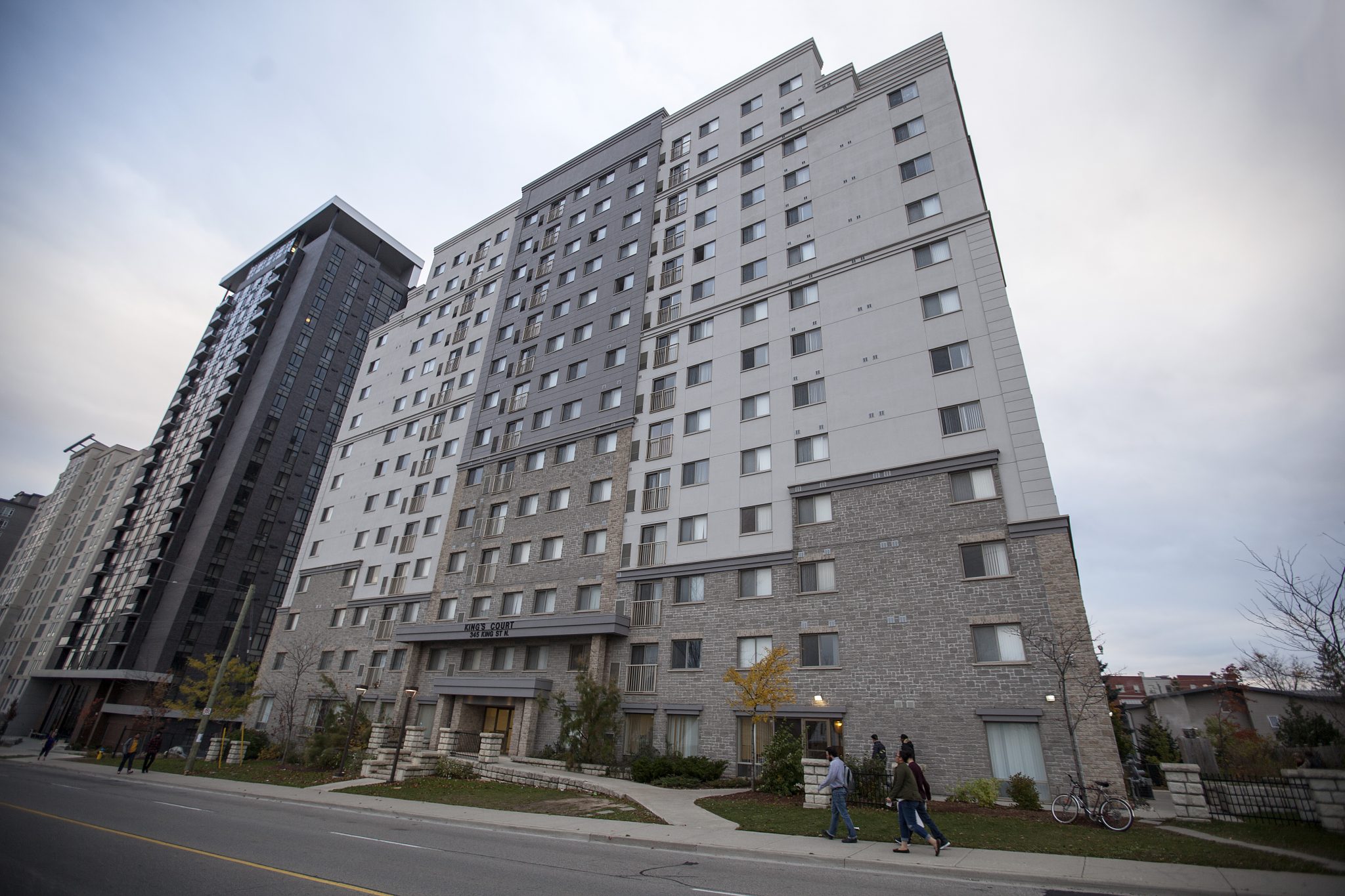Laurier and Ontario University Application Centre create more gender options for residence application


Wilfrid Laurier University’s department of residence is working with the Ontario University Application Centre (OUAC) in order to create various gender identity categories when applying to residence.
The residence staff are in the process of creating this option but have taken several steps to ensure that students can be accommodated for their specific needs.
Clayton McCourt, associate director of Residence Life, explained the process as well as the steps the department of residence takes concerning the gender accessibility needs of all students.
“This year we’ve tried to work with students individually as much as possible as students have identified as other or as non-gender specific, so we are working with students on an individual basis … and basically figuring out what the reasonable accommodations are for their needs,” McCourt said.
In the future, the department of residence plans to have a better system in place which involves students knowing their options ahead of time before they even apply.
“Next year we’d like to set aside some more specific gender neutral options for students and have them labeled or listed ahead of time so students can see what the options are,” McCourt said.
Once students have accepted their choice they can apply for residence at the desired institution. OUAC currently is based specifically on how the student identifies and then having a conversation afterwards to ensure that the student’s feelings are accommodated. However, residence life hopes that in the future students can have a seamless transition to residence.
“We want to offer students, but specifically members of the LGBTQ community and transgender community, a seamless transition into residence no matter who you are,” McCourt said.
“I think students at this point may not know all of their options and we want them to know options ahead of time at our website or whether it’s knowing at the Ontario universities fair right from the get-go we really want students to know what is available to them.”
Toby Finlay, administrator for the Laurier Rainbow Centre, explained that it is important to have available housing for students that affirms their gender identity.
“When students don’t have housing that affirms their gender identity – first of all – they’re put in a position where the place that they live and call home doesn’t really capture the person that they are and their true authentic self, which is a really difficult place to inhabit within a university,” Finlay said.
Finlay recently worked with Laurier Students’ Public Interest Research Group (LSPIRG) this summer, focusing on transgender inclusivity and non-binary inclusion in university settings.
“The most important thing is to give students an option to communicate their gender identity, which is what the university is doing. The first step is to provide an option for students to indicate what their gender identity is and to non-restrict that to a binary option,” Finlay said.
“The second step is to offer a housing option that upholds that identity and supports the student in having an affirming and safer place to live with respect to that identity.”
When it comes to the residence structure and physical layout of the building they believe that this will be one of the most challenging barriers to go through when it comes to making residence accessible for transgender and gender non-conforming folk.
“I think the largest barrier is going to be sort of [thr] physical structures of the residence building … because the reality is that these buildings [were constructed] under gendered models,” Finlay said.
Education is another barrier that the department of residence is going to have to overcome. Various workshops have allegedly taken place with the Rainbow Centre relating to transgender and gender non-conforming inclusion. However, Finlay added that there is a lot of work to be done, not just in the residence department, but within the institution itself.
“There still is a lot of learning that needs to be done by, not just students, but staff and administrators in the institution,” Finlay said.
“I think there’s interest in making themselves capable of supporting transgender students as much as possible. I think it will be a matter of residence doing the work to honour their intentions of supporting transgender and gender non-conforming students.”
McCourt explained that the department of residence also has a priority of educating staff and administration.
“I think the goal is to make residence inclusive for everyone and that educating and training all our staff appropriately and my number one goal.”
McCourt explained that this is not going to be a transition and learning process that is behind closed doors. The department of residence plans to include various groups on campus – as well as welcoming student voices – in order to learn and grow during this process.
“We haven’t gotten there just yet,” McCourt said. “This is not going to be an insulated process, were not going to be sitting behind closed doors cooking up what the process is going to be.”
“Essentially there are going to be numerous members of our team who are going to be involved in this strategy … we are going to be getting together with the diversity and equity office shortly after move in day and build a strategy.”
The department of residence plans to start this project as soon as possible, ultimately having more options for students available next fall.
Finally, Finlay wants to remind the community that this residence option isn’t a perfect solution to violence and discrimination.
“It’s really important that we strive towards having space that, first of all, is supportive of transgender and non-binary students,” Finlay said.
“But also, setting a tone within the institution that transgender and gender non-conforming students are valid and [their needs] are just as important as everyone else.”

